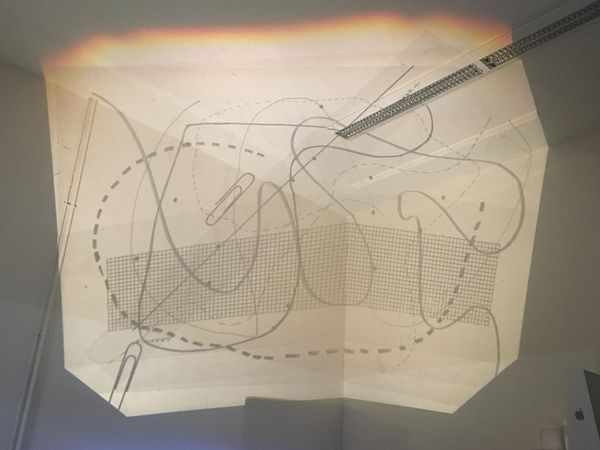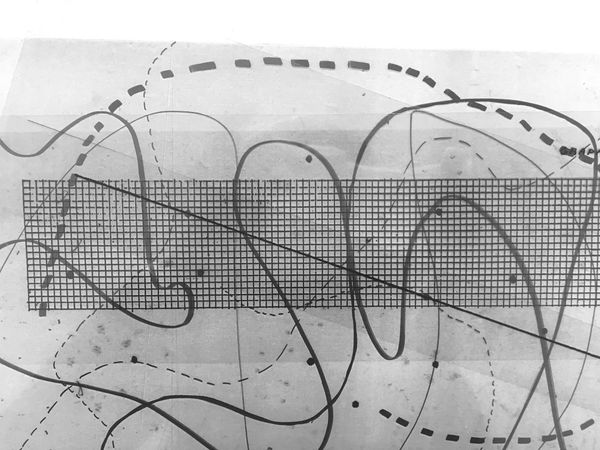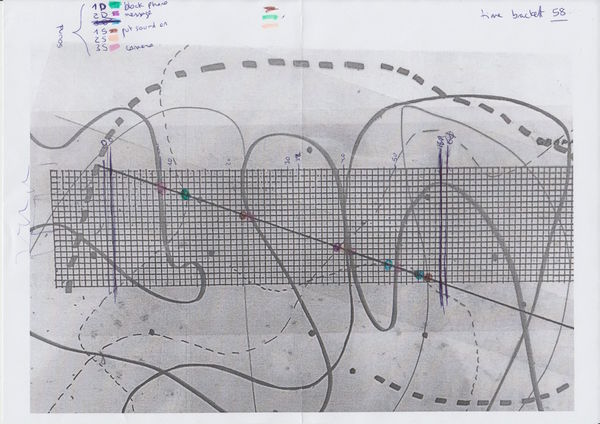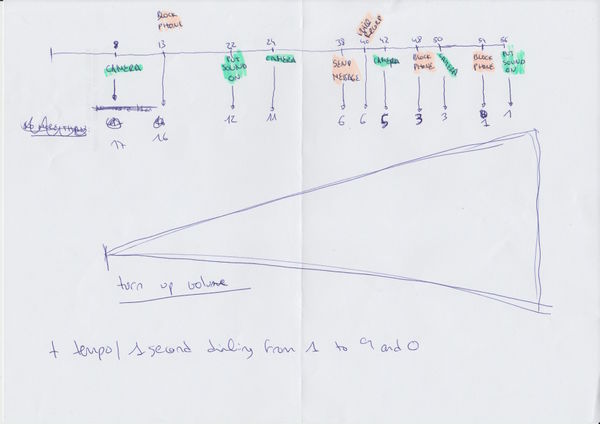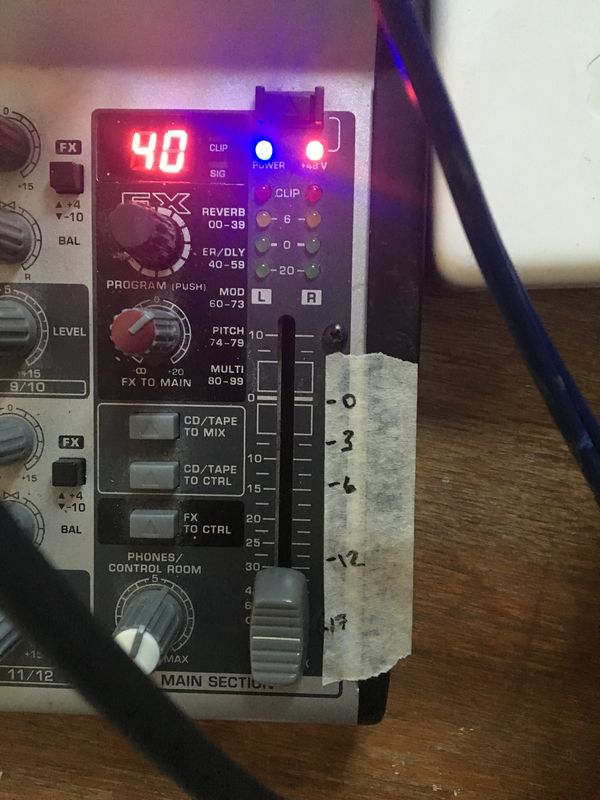Karina/special issue 02 pushing the score sessions
26 JANUARY
Evernote
https://www.evernote.com/shard/s368/sh/4669617d-ea39-4914-a719-d45c203fa763/510b8540d6a52ccb4a366978deeb1e2f
wiki
https://pzwiki.wdka.nl/mediadesign/Graphic_Scores-avant-garde
etherpad
https://pad.pzimediadesign.nl/p/pts-2017-01-26
JOHN CAGE!
20th century avant-garde
Why is a graphic score needed?
- visual language better suited for interpretation?
- represent soundsthats not able to be represented by conventional notation.
- inventing a notation systems . An expression.
- guide-lines / instructions
- an archive
John Cage - Sonatas and Interludes for Prepared Piano (1946–48)
- changed the sound of a grand piano by placing small pieces on the strings
- the prepared piano entered Cage's repertoire with the composition Bacchanale(1940) for a dance piece by Syvilla Fort
- Cage wanted to compose a piece with a large amount percussion sounds, however he lacked the space on space for this, and was only provided with a piano
- he started experimenting with placing metal, rubber and wood objects on the piano strings, to obtain percussion like sounds
- his preparation provided to a pianist a pallet of sounds and an interface that could only be achieved by a large number of percussionists
- although the score for Sonatas and Interludes for Prepared Piano is not a graphic score, it included graphic and text notes on how to prepare the piano
Detailed instructions that allowed the piece to be reproducible
Had notations which allowed many interpretations for other players
https://www.youtube.com/watch?v=3w7GeJCLpJc
John Cage - Music of Changes (1951)
- composed for David Tudor
- in its compositional process Cage use the divination text I Ching: The book of Change as a chance mechanism
- by tossing coins one arrives at an hexagram and a corresponding ambiguous text
- change determined the sonority (not only pitches, but also complex sounds), durations and dynamics of the different sound events of the piece
- he did it to remove control and focus on chance / rolling dice
Hexagram 8 Holding together
https://upload.wikimedia.org/wikipedia/commons/6/6b/Iching-hexagram-08.svg
https://www.youtube.com/watch?v=eAjKD12RkEY
I Ching - Ancient Chinese fortune teller using coins
http://www.ichingonline.net
https://en.wikipedia.org/wiki/I_Ching
List of I Ching hexagrams
https://en.wikipedia.org/wiki/List_of_hexagrams_of_the_I_Ching
Project by graphic designer Leonardo Sonnoli dedicated to John Cage
Typography determined by rolling dice (reference to Music of Changes).
http://www.sonnoli.com/?p=408
http://everydayjohncage.tumblr.com/
Although same system, the meaning might be different
John Cage - Imaginary Landscape N°4 (1951)
- An electronic composition for 12 radios, operated by two performers each (24 people on stage)
- the I Ching was used to create the score: notating volume and tune control
- More than created by chance this work was indeterminate, as the source of sound - the radio spectrum - it is not known
- The composition is not reproduce, as the content is dedicated by what is played on the radio at that exact time
When performed for the first time, it was pretty silent (even though there were 12 radios) as most American radio stations in the 60s stopped playing at night
https://www.youtube.com/watch?v=yV-kWU1Z5u8
https://www.youtube.com/watch?v=iRa0j_EIth0
3 parameters
- time (in seconds)
- volume
- tuning
David Tudor - Rainforest (I - 1968)(IV - 1973)
- "sound transformations without the use of electronic modulation: the source sounds, when transmitted through the physical materials, will be modified by the resonant nodes of those materials"
- "The contact mikes on the objects pickup the resonant frequencies which one hears when very close to the object, and then are amplified through a loudspeaker as an enhancement"
- "a large group piece actually, any number of people can participate in it… [E]ach person makes their own sculpture, decides how to program it, and performs it themselves"
- score: diagram describing the connection of the piece's constituent elements
- a piece that can compose itself out of its constituent elements
- indeterminacy
- pick-up contact microphones create different sounds depending on the object / material it is connected to
- people are given pieces and instructions, the sounds is the result of the interaction
- time is not present in the instructions / graphic score
http://davidtudor.org/Works/rainforest.html
http://composers-inside-electronics.net/rainforest/rainforest/RAINFOREST.html
https://www.youtube.com/embed/iT9HP48sHTg
http://www.getty.edu/research/tools/guides_bibliographies/david_tudor/av/rainforest.html
Holzer, Derek, and Mads BEch Paulszewski. n.d. “Rainforest 2012.”
http://macumbista.net/files/rainforest_overview.pdf
Driscoll, John, and Matt Rogalsky. 2004. “David Tudor’s ‘Rainforest’: An Evolving Exploration of Resonance.” Leonardo Music Journal 14: 25–30.
http://www.jstor.org/stable/1513502
“Vague Terrain 19: Schematic as Score | Vague Terrain.” 2017. Accessed January 24.
http://web.archive.org/web/20150227025105/http://vagueterrain.net/journal19.
Max: speicifc to classic music. John Cage - need to impose a notation system to open up the music. This type of notation is inherit to the music.
There was a necessity to break the formality and blueprint. Looked into Chinese chance (Music of Changes, 1951) but not into cultural background. Look into graphical notations from around the world (not just western)
John Cage - Fontana Mix (1958)
- Initially created for composing tape music
- Luciano Berio's invited Cage to compose a tape piece at the studio of the Milan radio
- The piece/score boroughs its name from Cage's Milanese landlady, Signora Fontana
- Although initially the score was created for composing tape music pieces, Cage understood it could serve other compositional contexts.
- More than a score, perhaps a meta-score, or a tool that allowed many scores to be created from it.
- Aria - for single voice
- Sounds of Venice (1959) - performance
- Water Walk (1959) - performance. Score https://www.youtube.com/watch?v=gXOIkT1-QWY
- https://www.youtube.com/watch?v=gXOIkT1-QWY
- Theatre Piece (1960) - for 1 to 8 performers of any sort (musicians, dancers, singers)
- Elements of the score:
- 1 straight line
- 1 graph/grid
- 10 sheets with dots
- 10 sheets with 6 different curved lines: solid or dotted, in 3 different thicknesses

